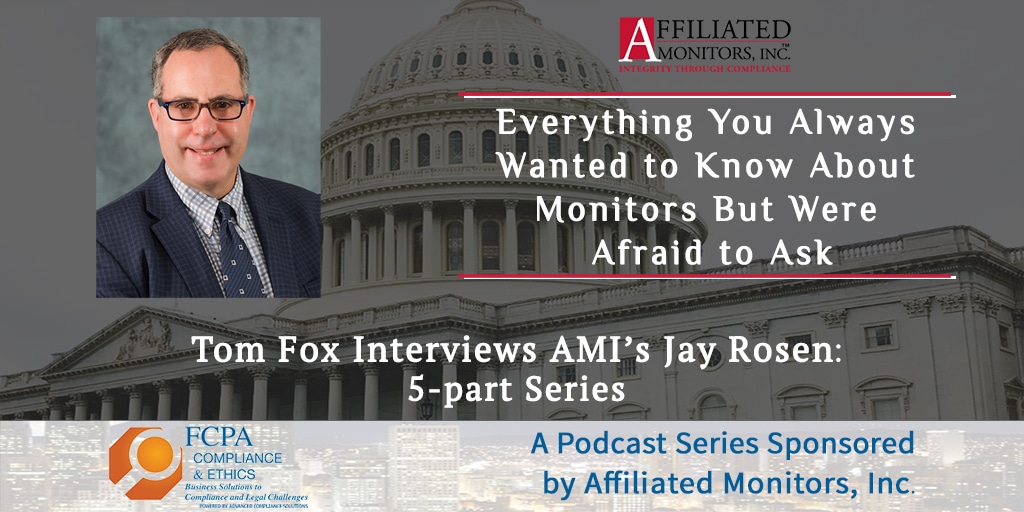In this special five-part podcast series, sponsored by Affiliated Monitors, Inc., Tom Fox visits with AMI’s Jay Rosen. In this series they introduce the role of independent integrity monitors and corporate monitorships; discuss both pre-settlement and post- resolution monitorships and their different applications; considerations a company should take in hiring a monitor and cost reflections for monitorships.. Listen to the full series below, or wherever you listen to podcasts.

Day 1:
In Part 1, we introduce the role of independent integrity monitors and corporate monitorships.
Day 2:
In this Episode 2, we consider the use of monitors in the post-resolution phase. Some of the highlights from this podcast include:
- What is a monitorship in the FCPA Context?
- Complying with Consent Decrees
- When does post-resolution monitorship have the impact of a pre-settlement monitorship?
- There are myriad of other ways a post-resolution monitorship can help a company navigate post-resolution issues with regulators.
Day 3:
In Part 3, Tom and Jay discuss the power of a monitorship in the pre-settlement phase of any matter. Some of the questions answered include:
2. How can a pre-settlement monitorship be used as a pre-emptive action?
3. What is the power of a pre-acquisition monitor in M&A Due Diligence?
4. How is an independent integrity monitor can be a powerful prescriptive tool?
Day 4:
In part 4, we look at considerations when hiring a monitor, including the type and style of the monitor in your selection process, the expertise of the monitor, balancing the interests of the stakeholders, making sure that the monitor is bringing value to the company, and why a monitor must be independent and conflict-free.
Day 5:
In our concluding Part 5, Tom and Jay look at cost issues when hiring a monitor and how a company can work to ameliorate them. Some of the highlights from this podcast include:
- What will be the overall scope of the monitorship?
- What will be the frequency of engagement by the monitor?
- What will be the duration of the monitorship?
- What is the experience of the monitor and how does that play into overall costs?
- How you can work through cost control issues by using a robust monitor’s Workplan?
- How selective sampling is a powerful tool and why it can be a cost-saving measure.



